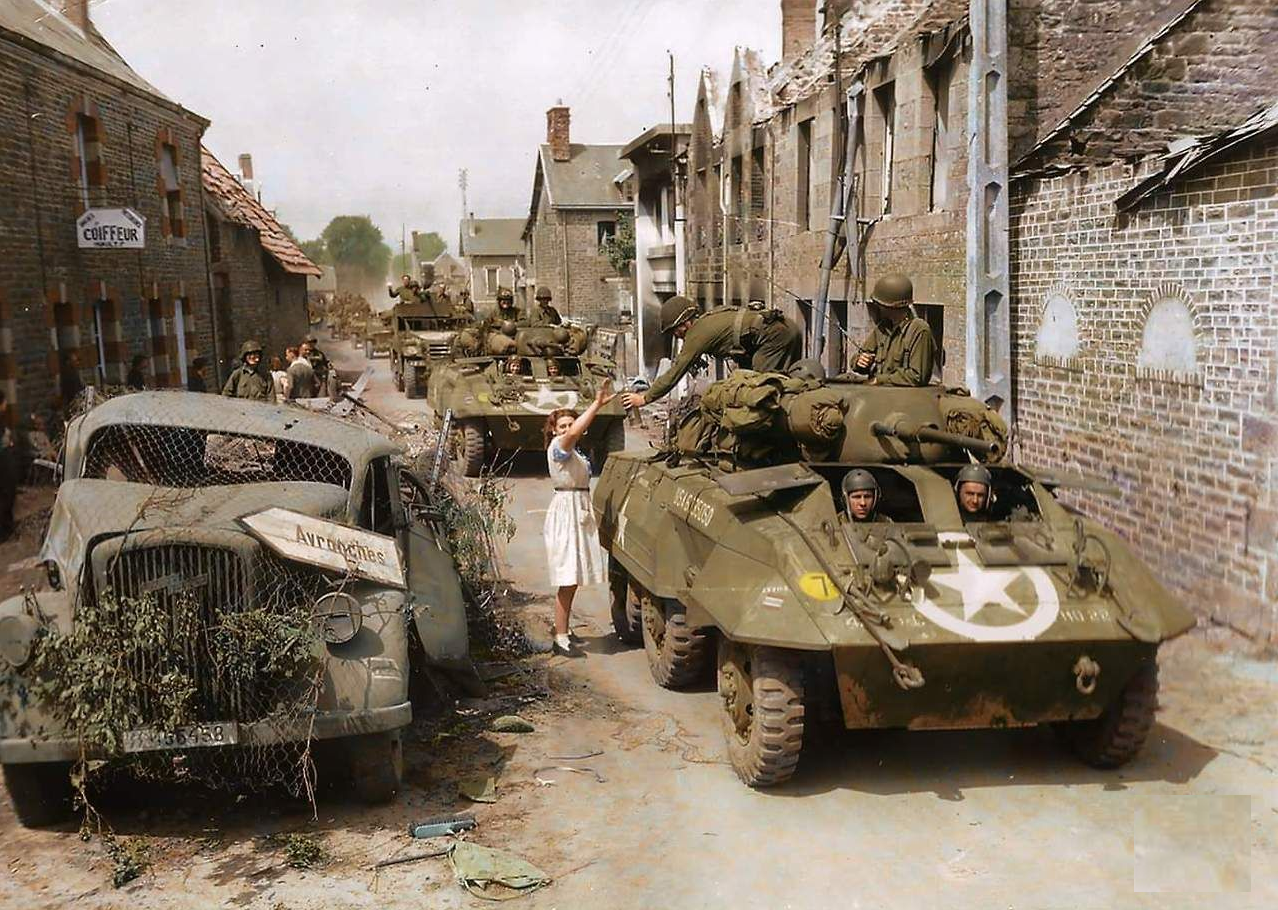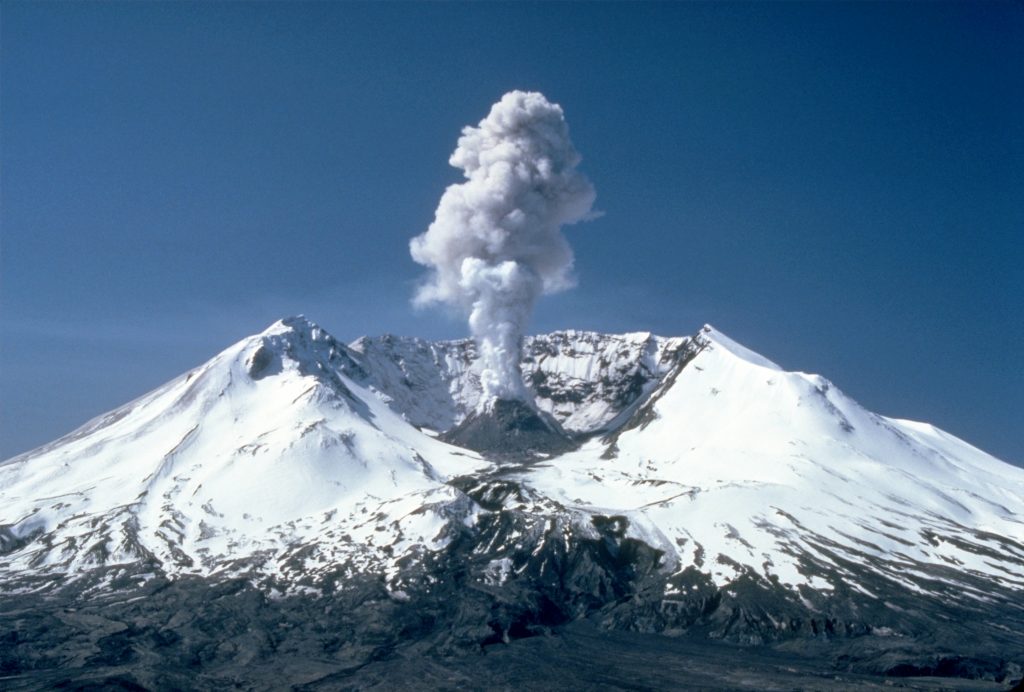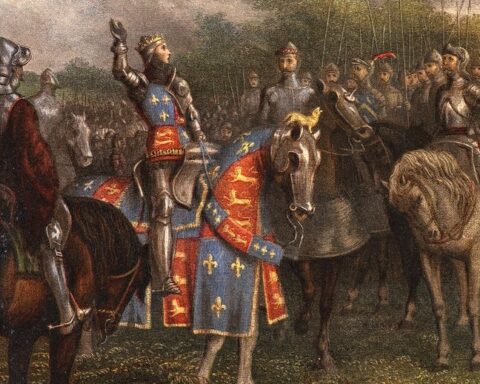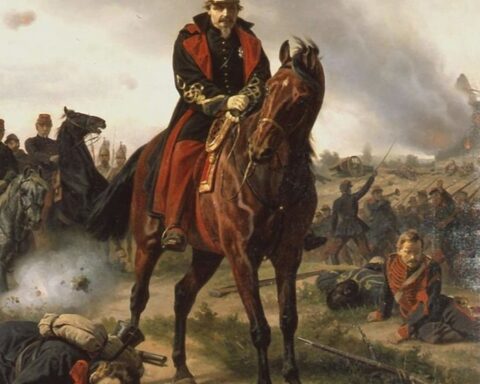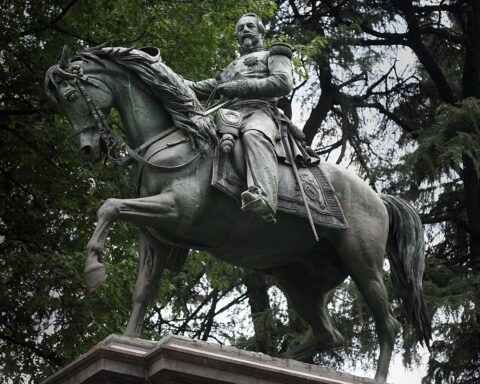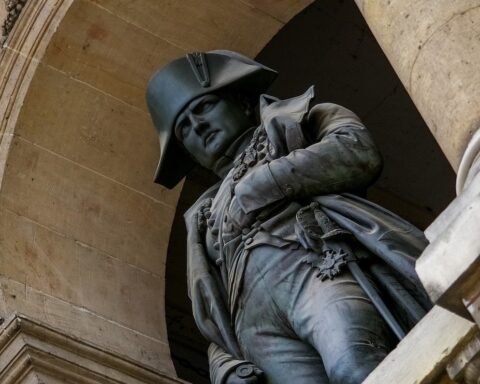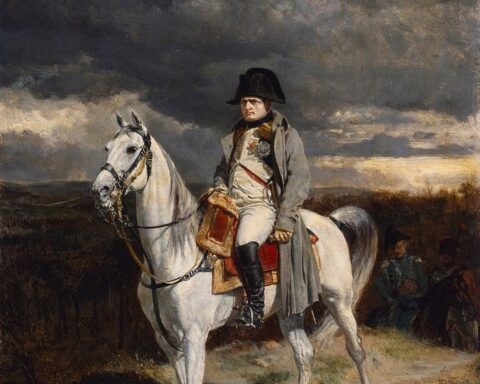Editor’s note: The following is extracted from General George S. Patton, Jr.: Man Under Mars, by war correspondent James Wellard (published 1946).
The most significant aspects of this impending defeat were the hundreds of high-wheeled, narrow farm carts which lay wrecked beside the Coutances-Avranches highway. Be side the carts dead horses stuck rigid legs into the air. From the carts overflowed the personal belongings of the German infantrymen. The great number of these carts became more and more impressive. As we rode by in our jeep, I tried to understand what this could mean, and what it resembled. I had never seen carts used in war before — except by the Senegalese and Colonial French troops in Southern Tunisia. It was at first hard to reconcile these carts with war, and hard to believe that the German Army, of all armies, was using them.
Then I remembered where I had seen similar carts before. I had seen them in pictures of Napoleon’s retreat from Moscow. So, if the evidence of these carts was valid, the German Army was retreating as Napoleon retreated out of Russia. They were requisitioning horse-drawn vehicles to carry their possessions, and themselves walking on foot.
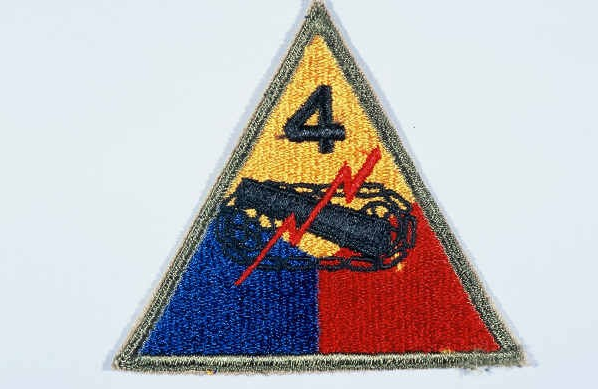
This was only the beginning, for through the little hole which began at Lessay and ran like a bottleneck down the west side of the Cherbourg Peninsula, through Coutances, Granville, and Avranches, Patton poured the greatest flood of armor and men which Europe had seen since the German blitz of 1940. Within a week the entire Third Army, as it was then constituted, had rolled down this one highway, and fanned out to the west across the Brittany peninsula and to the east behind the whole length of the German Seventh Army. The speed and weight of Patton’s attack actually broke the three German armies in western Europe. In the strictly military sense, the Wehrmacht was decisively beaten by a single American armored division, the 4th, which spearheaded the offensive, and turned the whole Nazi Normandy line. The German High Command knew from that moment that the war was lost. Cliques within the High Command had by their attempted assassination of Hitler, tried to save something of their army, conquests, and national resources by seeking terms in July. They knew they could fight on for a year; but they also knew Germany was potentially defeated when the Allied armies began elbowing their way out of the Normandy peninsula and began running like a flood over the plains of central France.
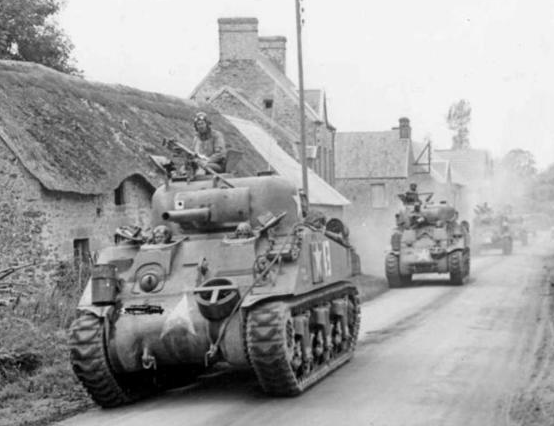
Soon it became apparent, even to the non-professional observer, that the Wehrmacht had suddenly collapsed. That was the meaning of the wrecked farm carts. As Patton’s armor poured through the Avranches gap, sliced across the German lines to the south, overran their outposts, crushed their headquarters under tank tracks, and attacked their field positions from the rear, the Germans, as a last resort, stole every vehicle from the countryside, from horse-traps to wheelbarrows, and ran away. They threw their belongings into these decrepit wooden carts, and started — some times south, sometimes west or east — without direction or guidance and finally without discipline.
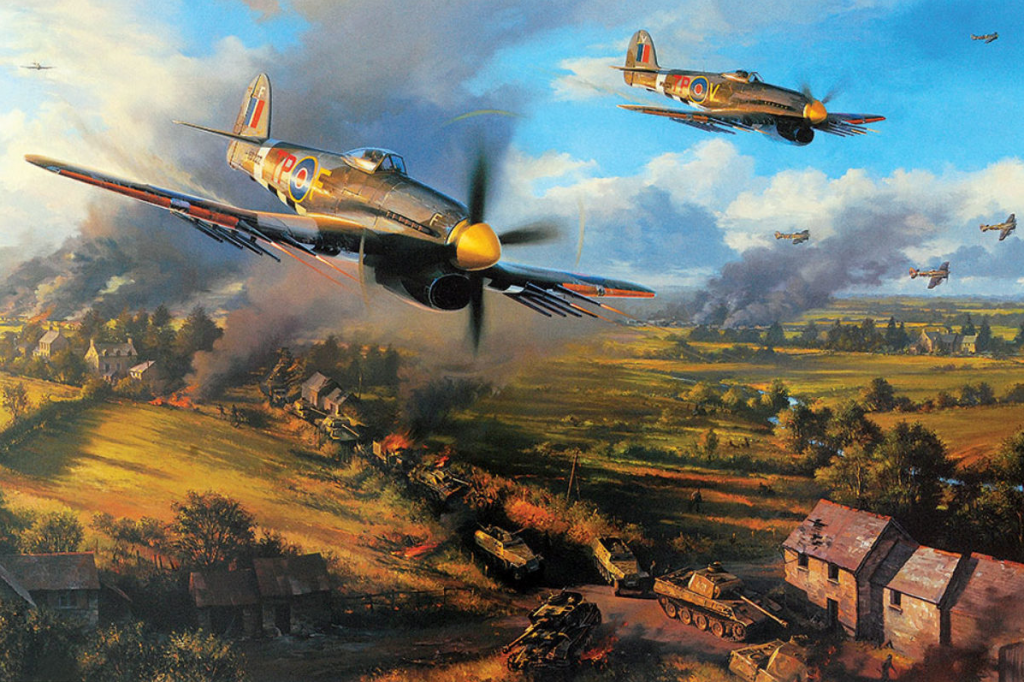
Next, the air forces caught them. The weather had come in fine. There were no clouds. The days were long. From five o’clock in the morning till after ten at night, our fighters strafed and bombed the long, straight, tree-lined roads of France. The result was an incredible spectacle of upturned farm carts, hurriedly camouflaged, dust-brown, and be- sporting pitiful withered tree branches; and beside the carts, the distended carcasses of dead horses, and broken-down wheelbarrows, knocked-out tanks, burning half-tracks, and bullet-riddled private cars.
What had happened was this: When the Third Army started moving through the Avranches hole — and continued to pass through despite the German armored counteroffensive designed to drive back to the sea on the west and cut off all American forces south of Avranches — all German forces in Brittany were in danger of being cut off from the rest of France. So the German High Command ordered a double movement of German troops in this area. Some were to retreat westward to the Atlantic ports of Brest, L’Orient, and St. Nazaire; the remainder were supposed to retreat eastward towards Paris.
The German General staff calculated that Patton was after the Brittany peninsula and the great submarine bases of Brest, L’Orient, and St. Nazaire. They believed Eisenhower would need adequate ports and docks before he attempted to drive east. They were partly right. We needed ports other than Cherbourg, which had been our only sea supply route for two months, with everything else still coming into France over the beaches. What the German High Command did not anticipate was that Patton would split his army into two, and put his main strength into his eastward drive. In other words, Patton was not after ports or submarine bases. He was after trapping the entire German Seventh Army. At the beginning of August he started the biggest encircling movement of the Western European war. He started it on August 1, and completed it by reaching Falaise on August 11, without the Germans knowing where he was or what he was doing.
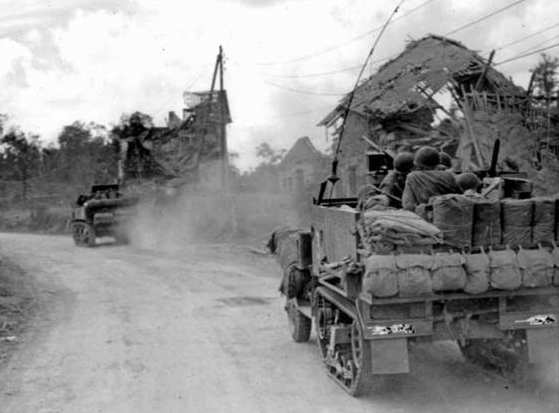
The power and speed of Patton’s multiple drives — one west to Brest, another southwest to L’Orient, another south to St. Nazaire, and the fourth, an all-out blitz straight behind the German Seventh Army — accounted for the incredible confusion we were now seeing on the roads of France.
We saw the results of this chaos in the form of the wrecked Nazi transport, the knocked-out equipment, the truckloads of German prisoners who had been rounded up, and the hundreds of them who were still wandering about the countryside waiting to give themselves up. The French Maqui saw the real chaos, and helped increase it in a hundred ways.
They told me at Vitre what the scene had looked like to them. It appeared a German infantry division had been ordered to evacuate Rennes on August 1, and make its way east through Vitre and Laval to the Paris region. A French colonel, chief of the FFI of the area and agent for the Allies, sat himself in a hotel window in Vitre, sipped his ersatz coffee, and watched the following spectacle provided by the mighty German Army: First, he said, came ten tanks and about a score of cannon, mostly 88s. Next came a fleet of Rennes buses, painted white and marked with red crosses. Some of these buses carried medical personnel and material, others were loaded with infantrymen, supplies, and oil drums. Behind came an assortment of military and private cars, carrying high-ranking officers. Then came the ragtag and bobtail on foot. The French colonel, who, like the rest of us during those tremendous days, was inclined to mix emotion with facts, swore the entire German division was drunk. They came along, he said, in shreds of shoes, their uniforms unbuttoned, their caps on the backs of their heads, tired but cheerful and, indeed, singing lustily. From their coat pockets projected the necks of cognac bottles. Intermingled with these groups of tramping and singing soldiers were horse-drawn guns, farm wagons, wheelbarrows, and bicycles. There was no sign of any discipline, and the officers who went by were alone or in groups of two or three. The astonishing thing to the colonel was the complete indifference this motley army displayed to their surroundings and the French people who stood gawking by the roadside. These Germans were not at all arrogant or even distant. They sat down on park benches in Vitre beside the local citizens, took out their bottle of wine and their rations, took off their shoes, enjoyed an al fresco lunch, brushed the crumbs off their clothes, put on their shoes, and walked away. This went on for two days. By the end of those two days Patton’s armor had captured Laval where the German division was supposed to re-assemble.
The fact was, Patton’s forces — armored and infantry — during those eleven days, went on the biggest rampage in the history of this war. In the tight military sense, the Third Army was out of control. Three armored divisions — the 6th driving to Brest, the 4th to St. Nazaire, the 2nd French to Laval and beyond — were never in direct contact with Patton’s headquarters after the first few days. The wiremen tried to keep telephone lines out, but the effective length of a field telephone wire is only sixty miles; and the advance elements of the armored divisions had gone another twenty miles by the time the wires were laid. But Patton, tearing around his vast front, moving his headquarters every day, was elated and more confident than ever. He had instructed his commanders to keep on driving, irrespective of resistance, irrespective of where they arrived. His army flowed all over the Brittany peninsula. The 6th Armored went 150 miles to Brest in four days, and lost contact with the main forces for over a week. The 4th Armored went nearly 200 miles to L’Orient in five days, and stayed by themselves down there without infantry or siege guns. The 83rd Division laid siege to St. Malo. Rennes was captured. An other powerful force — the main force — swung south from Avranches, raced through Laval, Le Mans, and up to Falaise through Argentan, a distance of 170 miles in twelve days. Literally, the Third Army no longer had cohesion, except for Patton, who drove madly along the wide, white roads, concerning himself with the direction and flow of his supplies, turning non-military vehicles off the road, roaring at soldiers who violated disciplinary orders, questioning anybody who did not look and talk like an American soldier. But this mad and piratical use of a modern army paid tremendous dividends. It was obviously smashing the entire German armies and defenses in the west. It was smashing them collectively and individually. The 4th Armored in the neighborhood of Rennes overran remnants of eight German divisions, capturing German command posts intact, taking so many prisoners they did not know what to do with them. Whole units of Germans suddenly threw down their arms and rushed out to meet our lone tank squadrons, before the French killed them in the woods. A single German corporal was put in charge of 500 prisoners, and told to march to the rear — five days’ march away. German officers were put on their honor to lead their men back to the prison cages. A 6th Armored Division combat team knocked out the remnants of an entire German division for two soldiers killed in the engagement. Our armor arrived at a German headquarters in Vitre while German commanders were at dinner, and received a cool surrender from the German officers who suggested the Americans join them for the meal. The Americans declined the invitation on the grounds that they knew of another German headquarters twenty miles further on, and they wanted to reach it that night. They reached it.
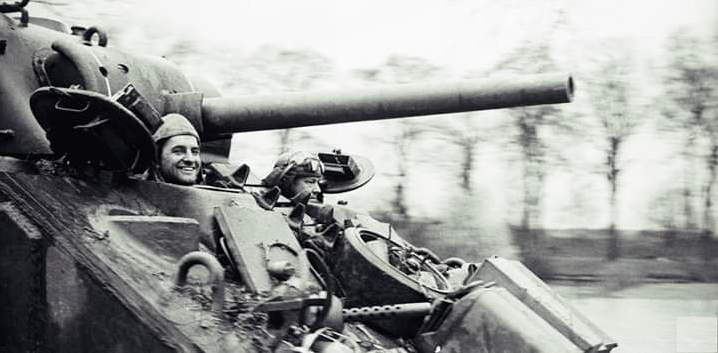
The French 2nd Armored Division, commanded by General Le Clerc, advanced seventy miles in twenty-four hours, right behind the German Seventh Army which was still facing Bradley’s and Montgomery’s armies on the Normandy beaches. By this time nobody quite knew what was happening or where our forces were. Patton himself did not know. He had given his last orders. They were simple: “Go where you can, as fast as you can.” It may not have seemed practical back in the offices of the Supreme Command in London, but out here in the rolling countryside of France, it was actually working, as it had worked in the California desert on maneuvers. Patton had proved his theory: that modern armies can defeat the enemy without fighting him, if they move while the enemy tries to stay in position. He was, in effect, defeating the German armies in the west simply by hurling his armor into the blue.
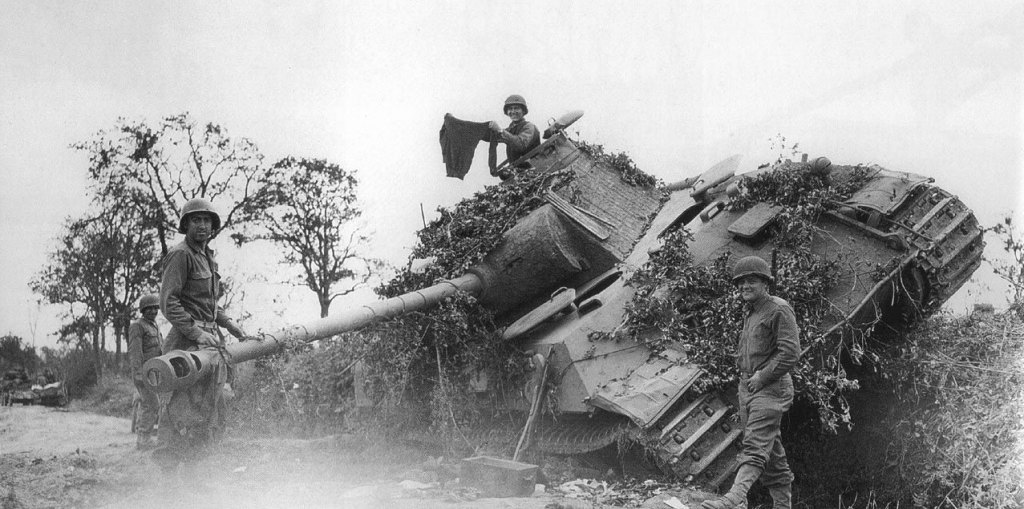
This, then, was the war against Germany in August, 1944. Patton had broken through and the entire German front was collapsing on the western sector covering Brittany. For a few days nobody knew what had happened or what would happen next. Those of us who were not in the fighting vanguard were carried along on a tide of emotion and champagne. We had lost contact with headquarters and the press camp. But everybody had lost contact with everybody else. This was how Patton wanted it. His armor was still driving and slashing across the German rear. The German defeat was becoming a rout, and the rout a collapse. General Patton had effected the greatest movement of armor and infantry in history.

